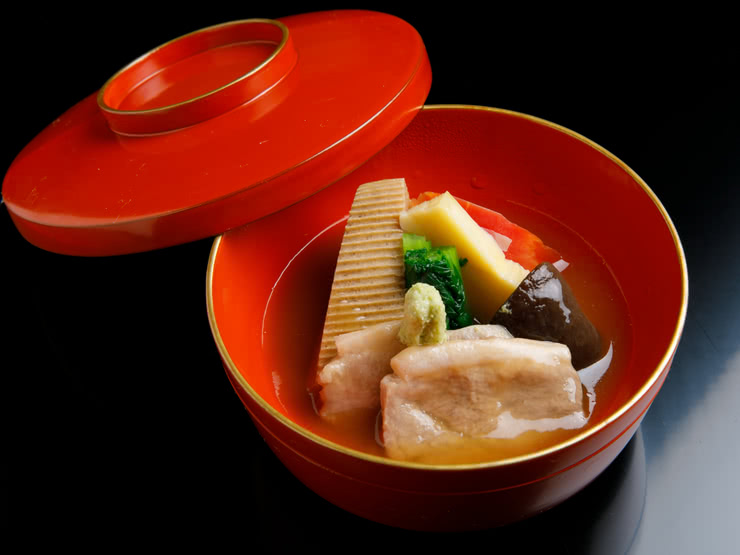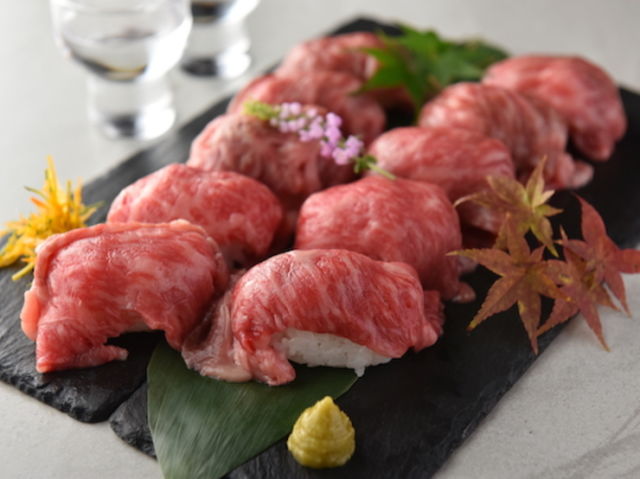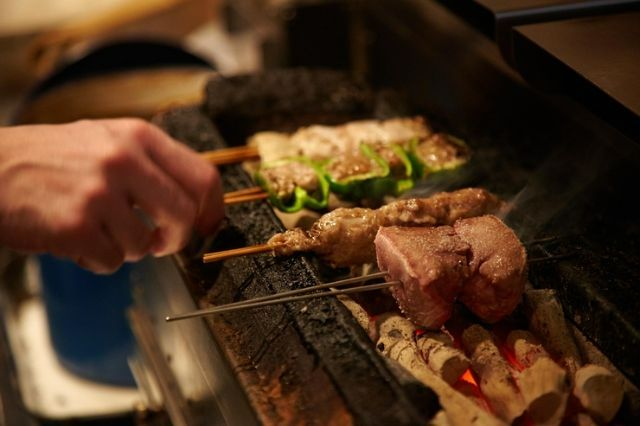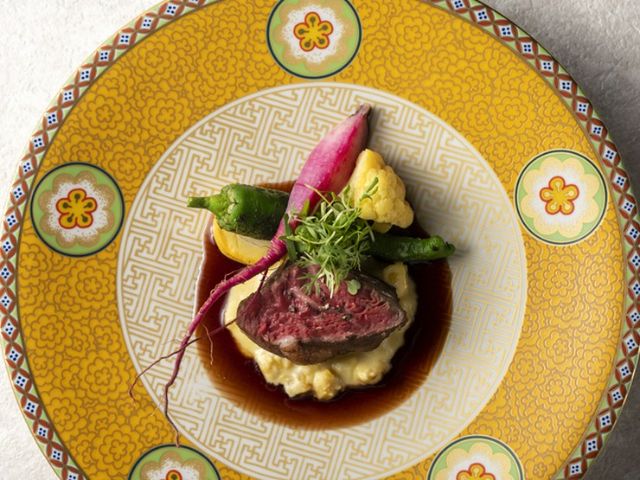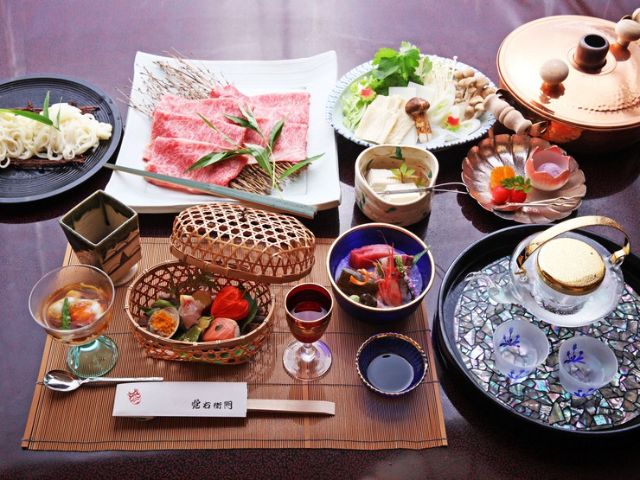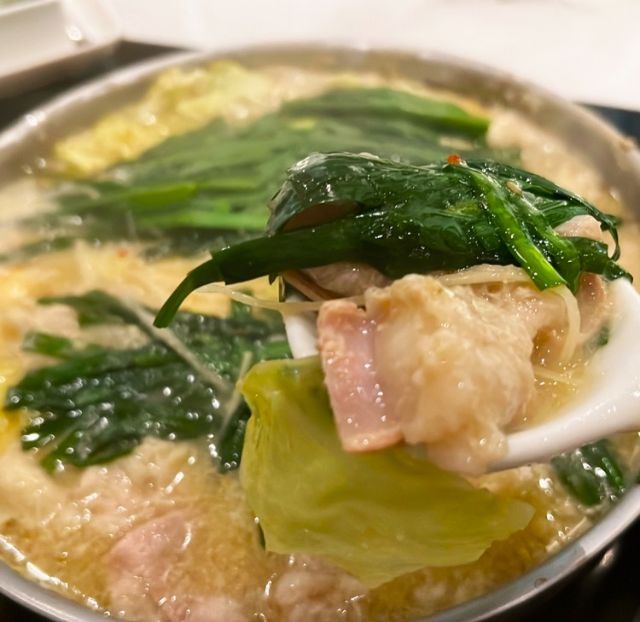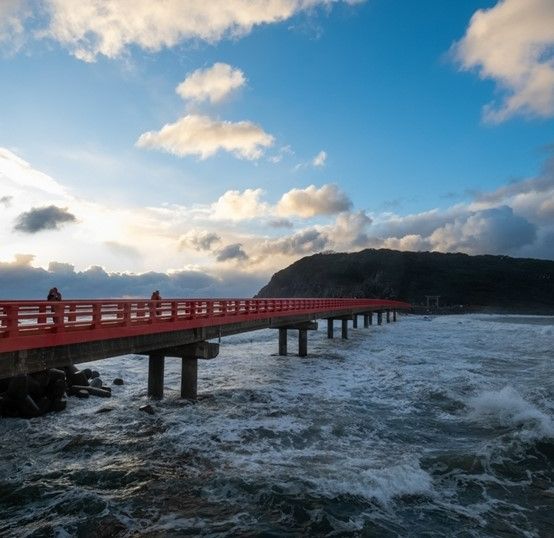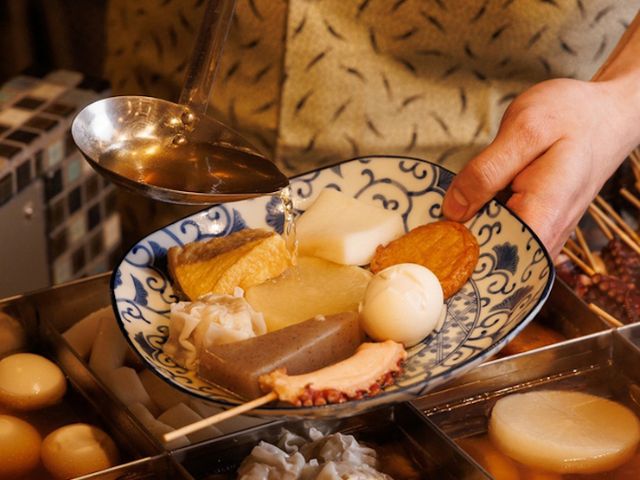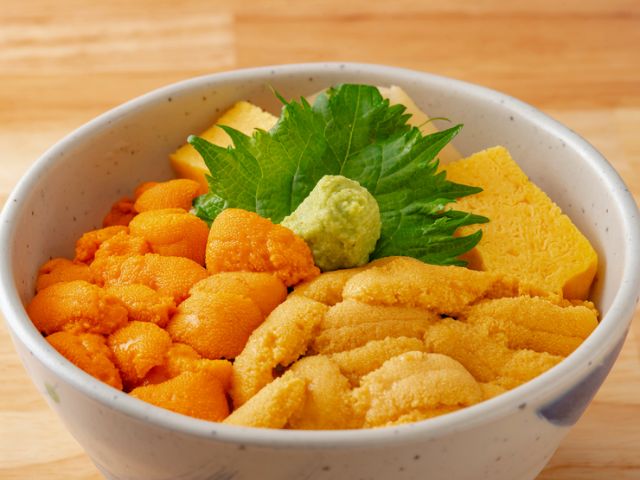Travel to taste the exceptionally fresh 'Machi-Zushi' (Town Sushi) in Himi, one of Japan's leading fishing towns
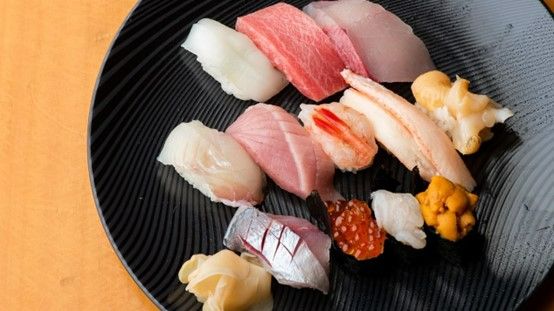
"Kiyomizu," a machi-zushi restaurant that prioritizesfreshness, is located right in front of the Himi fishing port where the ownervisits every morning
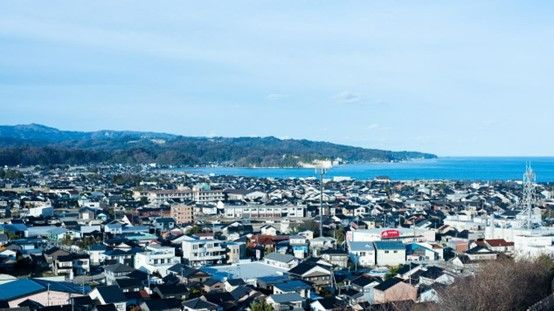
Himi's sea is located on thewest side of Toyama Bay, which is the largest oceanic inlet in the Sea ofJapan. There is a continental shelf off the coast of Himi, which ischaracterized by a suitable topography for fixed-net fishing. Plankton isabundant due to the snowmelt water flowing from the mountains, and the seaweedbeds are extensive. Schools of fish that migrate from the northern sea gather hereto spawn.
Furthermore, even in thewinter, when the Sea of Japan is rough due to northwestern winds, Himi is aplace where fishing is possible all year round including winter, as the windsare blocked by the Noto Peninsula. With such favorable conditions, Himi hasbeen a thriving town in fishing and aquatic processing since ancient times.
Naturally, people livingthere have been eating various local fish as a part of their daily diet for along time. Sushi has also been popularized as one of the cooking methods toenjoy "fresh fish" in the area.
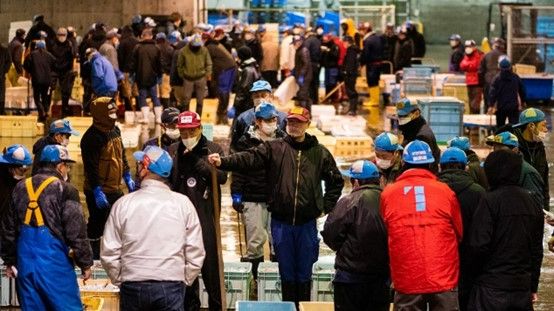
Thus, having pride in thefreshness of the fish that has just been caught is the essence of Himi'sfishermen, and this sentiment has been passed down to the chefs of Himi aswell.
The reason why an owner with the right to participate in the fishauction personally selects the fish for use in sushi
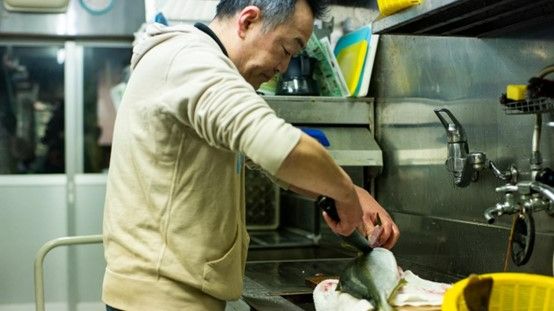
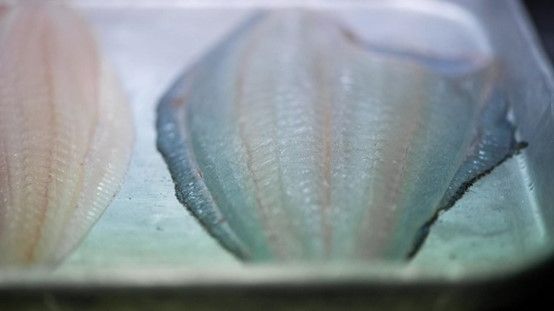
"I think there are fewplaces outside of Himi where fish that were swimming lively in the sea untilaround 3 a.m. become sushi for lunch. The freshness is the weapon of the sushimade here. That's why I immediately process what I've bought to maximize itsfreshness," says Mr. Shimizu.
Sushi that is loved by both locals and tourists
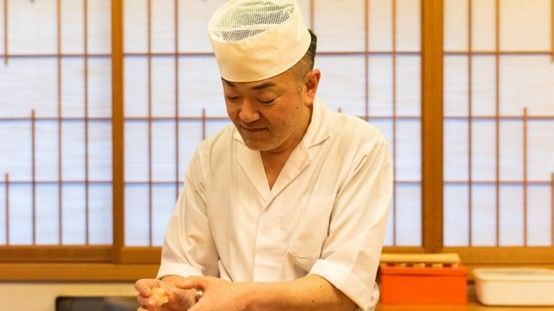
He worked at a restaurant inKanazawa for 5 years and opened his long-awaited sushi restaurant in Himi atthe age of 27. He uses fish that have been caught as much as possible from theHimi fishing port in front of him. The seasoning and cooking of the vinegaredrice are inherited from the way of the Kanazawa restaurant where he trained.
However, Mr. Shimizu has hisown obsession with "matching fresh fish with high-quality rice." So,he mills the Koshihikari rice sourced from the contracted farmers of his familybefore every business day, only for the amount he will use.
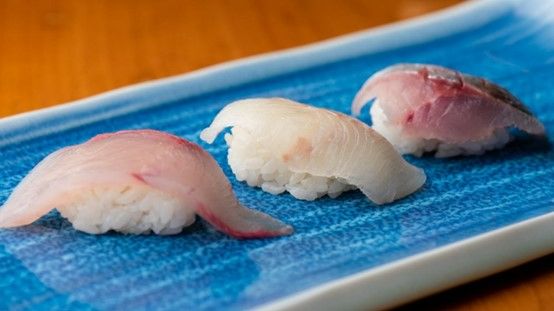
The toppings are cut slightly thicker, and the flounder has a unique, chewytexture that pairs well with the sweet vinegar rice, which doesn't emphasizethe acidity of the vinegar too much. Amberjack and mackerel are also cutslightly thicker, and after enjoying their chewy texture, the aroma and umamiof the fish gently spread in my mouth.
The sushi at "Kiyomizu" is different from the charm of traditionalEdo-style sushi, which is made with sharp vinegar rice with a sharp flavor.It's sushi where the fish is the star of the show. The pure, unadulteratedfish, which is not subjected to any processing such as kelp or vinegar marinatingor aging, is gently supported by the mild vinegar rice. Sushi that makes youfeel the vast and accommodating sea is unique and charming.
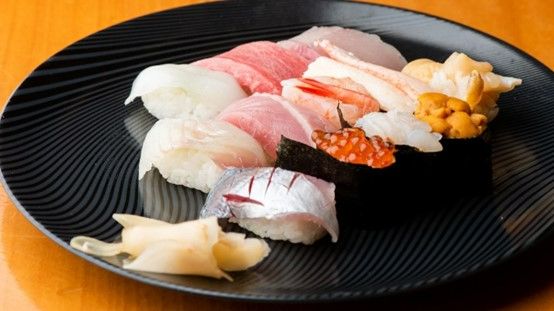
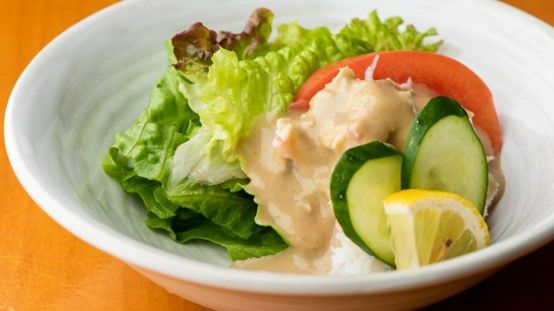
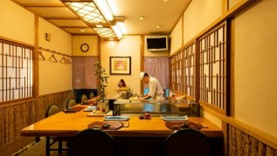
きよ水 Kiyosui
Closed: Wednesday, first Thursday of the month
Travelers' stopping spot: Himi Banya-gai, outside of Himi Fishing Port Market
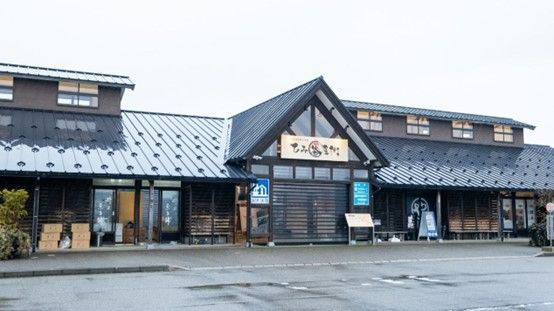
“Kawaki" is a restaurant where you can fully enjoy the fish caughtin front of Himi with sushi and dishes
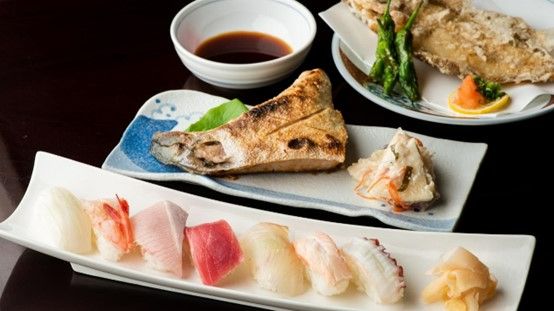
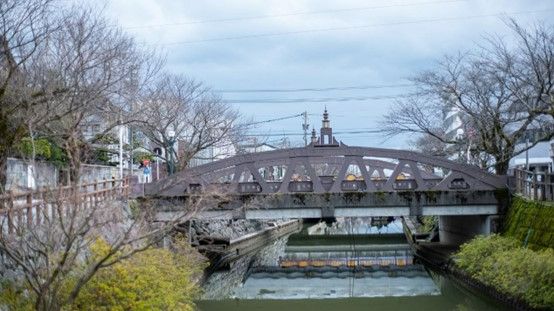
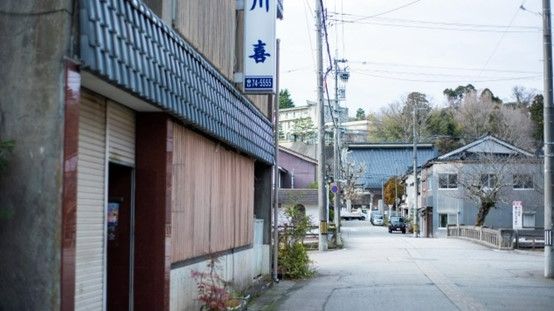
Did you know that Himi's soysauce is a little different from the typical soy sauce found in Tokyo andelsewhere? Himi's soy sauce is slightly sweet. This soy sauce is anindispensable part of Himi's sushi that the locals say that when they eatsushi, it just doesn't feel right if it's not with this sweet soy sauce.
So why is soy sauce producedin this unique way in Himi? Before dining at "Kawaki," I wanted toask this question at "Honkawa Fujiyu Shoten."
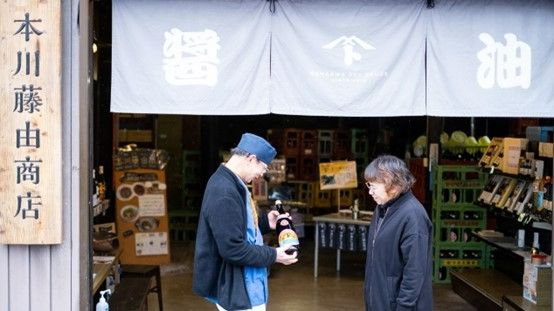
Perhaps because of the localgeography, many of the soy sauce shops in Himi started out as fisherycompanies. Honkawa Fujiyu Shoten is no exception, having originally been thehome of a fishery company. The unique origins of the company are tied to thehistory of the town, which has long relied on fishing as its main industry, andto stories from the Edo period of fixed-net fishing. During that time,fishermen slept and ate on their boats, with meals consisting of freshly caughtfish and white rice. Each fishery company made its own miso to flavor thesemeals, and over time, some of these companies began producing tamari soy saucethat would complement the flavor of fish. This became a source of income forsome fishery companies.
"Our soy sauce isseasoned and cooked, then aged in our own brewery for at least a month. Thebrewery's koji bacteria gives the soy sauce a mellow flavor," says Ms.Michiko Morita of Honkawa Fujiyu Shoten. "Himi yellowtail, which has a lotof fat, tends to repel soy sauce, but a slightly thick and sweet soy sauce likeours can stand up to the richness of the fish fat. It really goes well withsashimi," she adds.
For Mr. Yokowa, the owner ofKawaki, this soy sauce is indispensable for his sashimi and sushi. He mentionsthat while there used to be five soy sauce shops in Himi, now there are onlytwo left. While walking down the street, he expresses his desire to continueusing the soy sauce that has supported Himi's food culture alongside sushi.
Prepare fresh fish from Himi using the techniques of a Ryotei

The beginning of"Kawaki" was when Mr. Yokawa's father turned his grandfather's fishstore into a sushi restaurant. As his mother started to make simple dishes toaccompany the sake they were serving, the restaurant became prosperous.However, Mr. Yokawa, who had been seeing only fish since he was a child,actually disliked fish. He decided to take over the restaurant even though hehad no interest in it, when he returned to his hometown after spending time inthe city and realized once again how delicious the fish in Himi was.
After deciding to take overthe restaurant, he studied sushi in Osaka and trained in cooking at a KyotoRyotei to be able to offer more authentic dishes and sushi. Since taking overthe restaurant, he has started serving not only sushi but also dishes thatutilize ingredients prepared in the Kyoto style.
Having cooked for a longtime in other prefectures and handled various ingredients, Mr. Yokawa firmlyasserts that the fish in Himi can be boasted about to the world. "Thereare many types of fish caught in Himi, and there are many good fatty fish.Also, the taste is completely different between the beginning and end of theseason. I hope that people will visit Himi many times not only in spring,summer, fall, and winter but also at the beginning and end of the seasons toenjoy the difference in taste," he said.
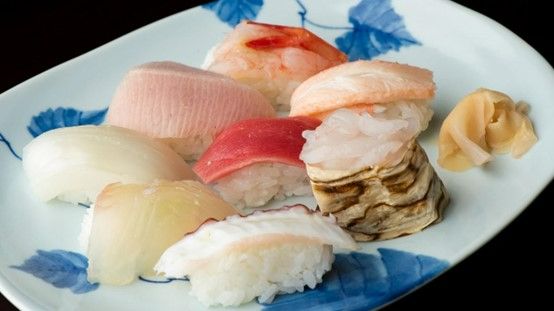
"For spear squid, it's better to make sushi with it as soon as it'scaught. Octopus also tastes completely different if you boil it right awayafter it's caught. I think that the fresh fish that people in Himi value somuch can bring out various flavors depending on the way it's cooked, not onlyjust by itself."
They use Koshihikari rice from Himi for the vinegared rice. They make a gentleand mellow flavor by using rice vinegar, mirin, sugar, and salt without losing theflavor and aroma of the fish.
To bring out the personality of each type of fish, they use vinegared rice thatsuppresses the personality of the rice. With this balance, they highlight thevarious expressions of the fish. The sushi at "Kawaki" is also asushi that puts the fish in the spotlight. Unlike lively sushi that emphasizesfreshness, it is sushi that allows you to feel the various expressions ofHimi's fish.
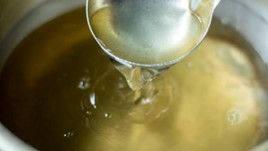
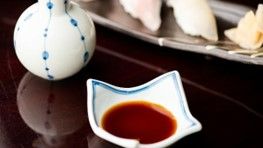
"Himi's sardine brothis very elegant. It goes well with any dish, and I feel that diluting this soysauce a little more brings out the flavor of the fish even more." As thesewords suggest, the rounded diluted soy sauce with softened corners has amoderate sweetness and a refined taste. It can be said to be the unsung hero ofenjoying sushi.
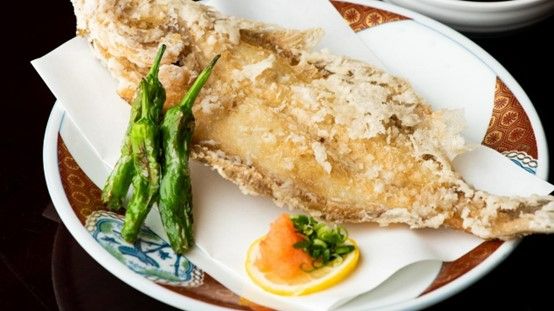
In addition, there aredishes that go well with alcohol, such as grilled fish marinated in Saikyo misoand "snapper roe simmered in sweetened soy sauce." All of themdemonstrate the chef's skill in carefully identifying the ingredients andbringing out their deliciousness.
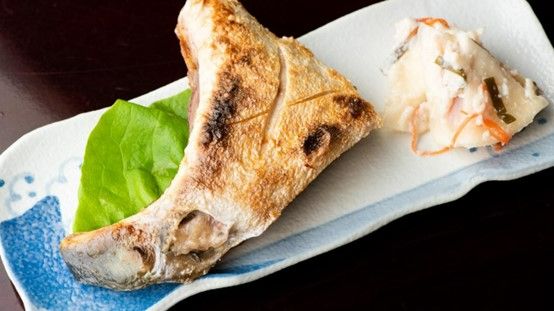
"I feel like the recentstrongly flavored sake doesn't really enhance the taste of the fish. I wantpeople to enjoy the taste of the fish, so I prefer an old-fashioned clean andrefreshing sake that doesn't interfere with the flavor of the fish. That's whywe only have sake from these two breweries. If you want to drink your favoritesake, please consult with us about bringing it," says Mr. Yokawa.
His love for fish is evidenteven in such details.
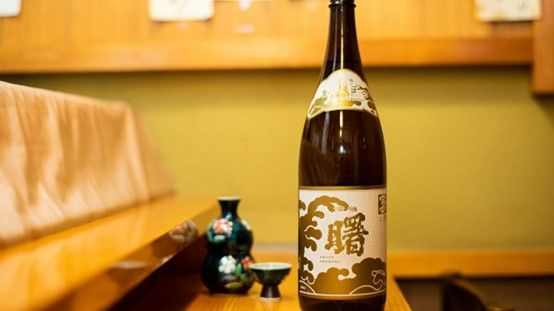
In the evening, take aleisurely walk along the Minato River and head to the restaurant. Sit at thecounter and enjoy local sake while chatting with Mr. Yokawa, and savor therecommended local fish with local soy sauce. From Ala Carte to sushi, you canfully experience the charm of Himi's fish.
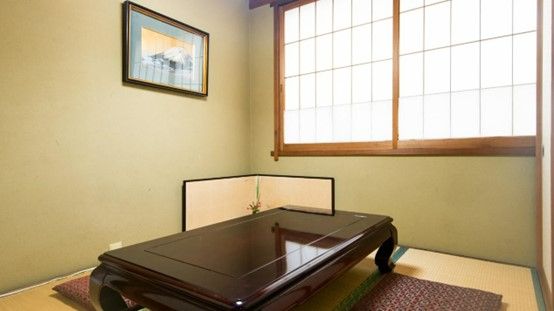
Address: 2-1 Honmachi, Himi, Toyama 935-0016
Hours of Operation: 11:30~14:00 and 17:00~21:00 Tuesday thru Sunday
Closed: Monday
Travel Stopover Spot: “HonkawaFujiyu Shoten”
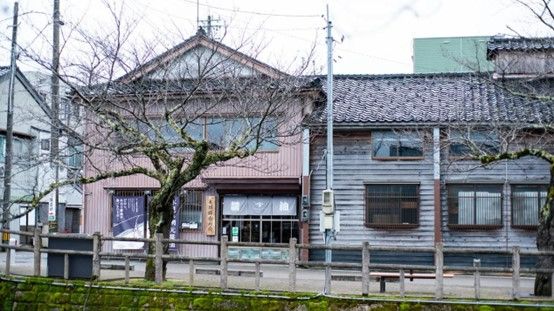
Contact number: 0120-720-702
Hours of Operation: 9:00~17:00Monday to Saturday
Closed: Sunday and nationalholiday
If you want to enjoy Himi's fresh machi-zushi, there are still seven places to go
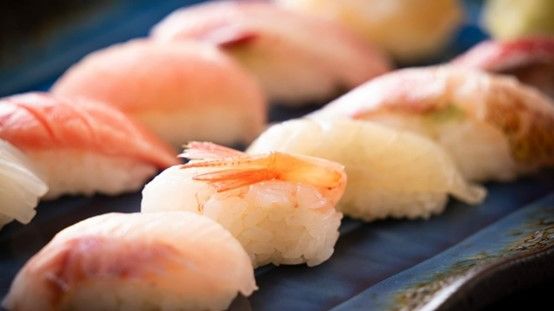
やうち(Yauchi)
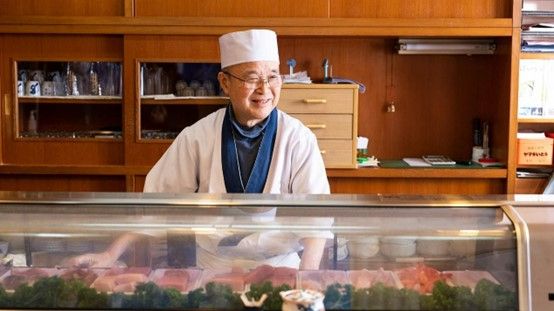
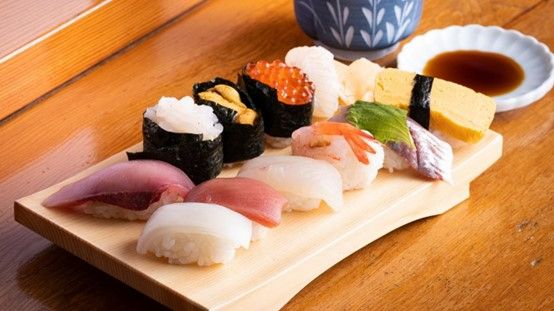

朝日(Asahi)

亀寿し(Kame Sushi)

松葉寿司(MatsubaSushi)
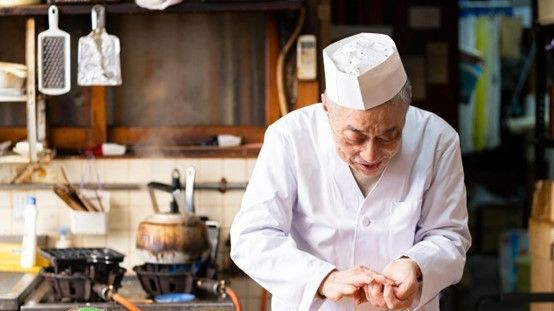
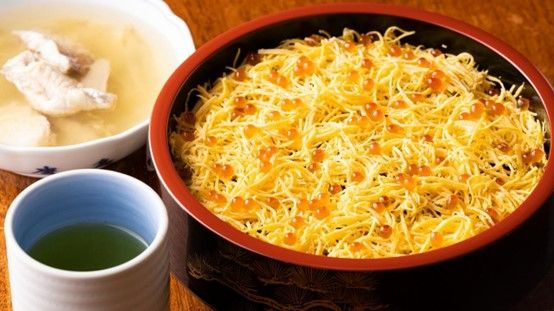
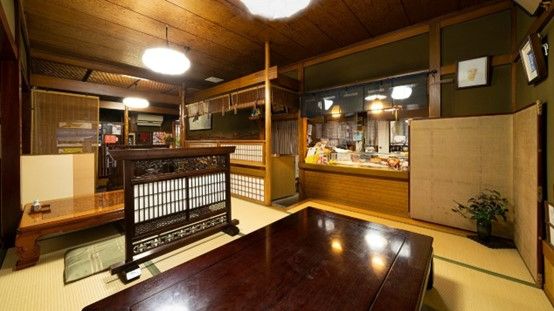
橘寿司(Tachibana Sushi)
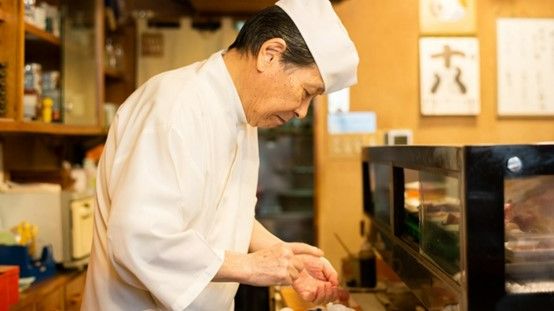
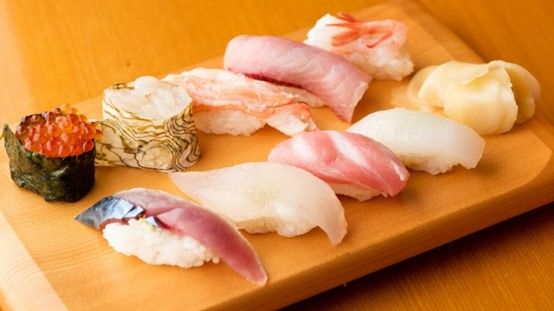
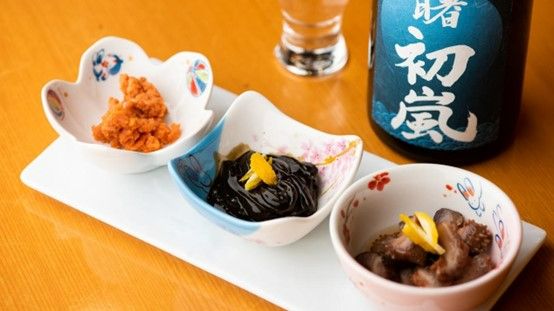
参志郎(Sanshirou)
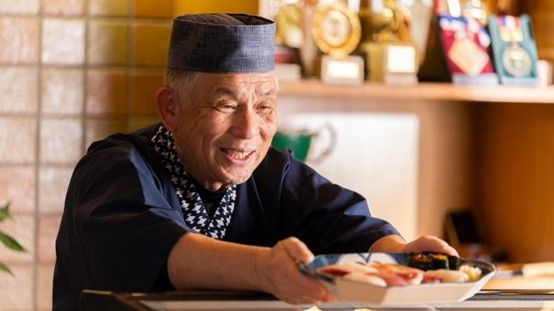
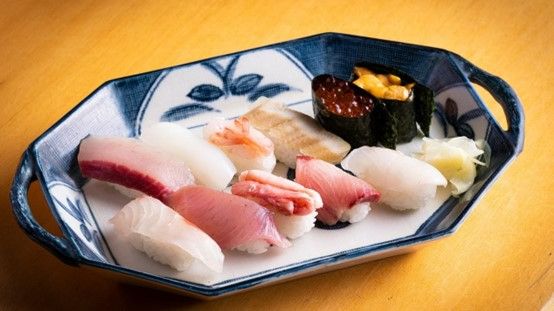
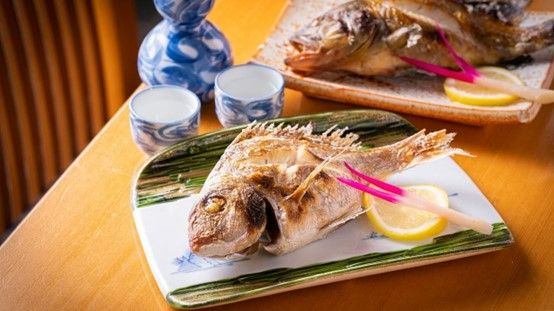
菅隆(Sugaryu)
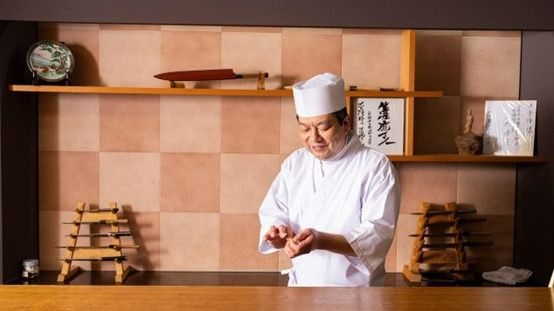
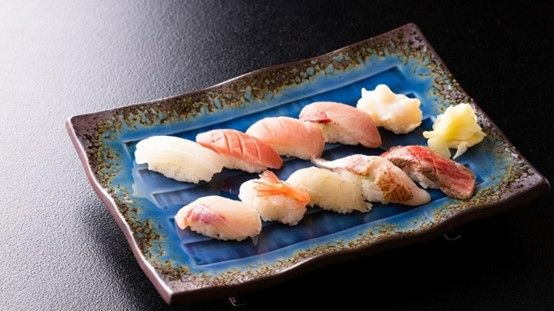
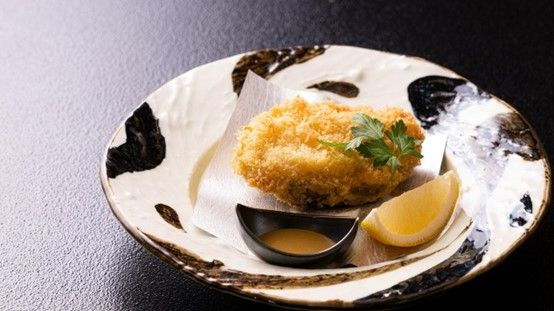
Disclaimer: All information is accurate at time of publication.
Thank you for reading our article.
Our goal is to take your culinary journey to the next level by helping you find the best restaurant. With SAVOR JAPAN, you can search and make reservations for
the Sushi restaurants found in and around Toyama that fill your needs.
Discover more Sushi restaurants by area
- Tokyo Area
- Near Tokyo
- Kyoto and Osaka Area
- Hokkaido Area
- Northern Honshu (Tohoku)
- Central Honshu (Chubu)
- Western Honshu (Chugoku)
- Shikoku
- Kyushu
- Okinawa and Ryukyu Islands
Discover more restaurants to eat Japanese Cuisine by area
Related Articles
New Articles
Categories
Cuisine
- Bars (23)
-
Japanese Cuisine (676)
- Kaiseki (45)
- Nabe (19)
- Okonomiyaki (24)
- Shabu Shabu (36)
- Soba (17)
- Sushi (137)
- Tempura (18)
- Teppanyaki (46)
- Shojin Ryori (3)
- Tonkatsu (12)
- Kushiyaki (10)
- Yakitori (46)
- Sukiyaki (35)
- Japanese Cuisine (341)
- Oyster (2)
- Sashimi/ Seafood (19)
- Unagi (eel) (30)
- Motsu Nabe (offal hotpot) (6)
- Mizutaki (chicken hot pot) (3)
- Oden (8)
- Kaisendon (seafood bowl) (9)
- Udon (2)
- Taverns(Izakaya) Cuisine (125)
- Western Cuisine (42)
- Italian/French Cuisine (95)
- Yakiniku/Steak (225)
- Chinese Cuisine (26)
- Ramen (Noodles) Cuisine (26)
- Cafe/Sweets (60)
- Other Asian Cuisine (5)
- Global/International Cuisine (7)
- Alcohol (45)
- Other (11)
Area
- Shikoku (10)
- Kyoto and Osaka (345)
-
Tokyo (460)
- Tokyo (286)
- Ginza (44)
- Roppongi (22)
- Shibuya (26)
- Shinjuku (47)
- Asakusa (20)
- Ebisu (12)
- Tsukiji (10)
- Tokyo Landmarks (4)
- Ueno (24)
- Akihabara (9)
- Ikebukuro (12)
- Jiyugaoka, Denenchofu, Nakameguro (9)
- Shimokitazawa (4)
- Kichijoji (3)
- Tachikawa (1)
- Omotesando, Harajuku, Aoyama (18)
- Akabane (1)
- Kagurazaka (4)
- Akasaka (10)
- Odaiba (1)
- Tsukishima, Harumi, Toyosu (3)
- Near Tokyo (100)
- Okinawa and Ryukyu Islands (58)
- Hokkaido (124)
- Northern Honshu (Tohoku) (31)
- Central Honshu (Chubu) (144)
- Western Honshu (Chugoku) (32)
- Kyushu (92)
Archives
- December 2025(9)
- November 2025(4)
- October 2025(3)
- September 2025(6)
- August 2025(11)
- July 2025(19)
- June 2025(18)
- May 2025(34)
- April 2025(43)
- March 2025(30)
- February 2025(36)
- January 2025(26)
- December 2024(69)
- November 2024(31)
- October 2024(15)
- September 2024(39)
- August 2024(65)
- July 2024(31)
- June 2024(54)
- May 2024(61)
- April 2024(28)
- March 2024(31)
- February 2024(42)
- January 2024(32)
- December 2023(20)
- November 2023(5)
- October 2023(11)
- September 2023(7)
- August 2023(18)
- July 2023(8)
- June 2023(8)
- May 2023(18)
- April 2023(15)
- March 2023(1)
- January 2023(1)
- April 2022(2)
- March 2022(2)
- February 2022(1)
- January 2022(1)
- July 2021(1)
- March 2021(1)
- February 2021(1)
- December 2020(1)
- October 2020(1)
- September 2020(2)
- August 2020(10)
- July 2020(6)
- June 2020(9)
- May 2020(11)
- April 2020(8)
- March 2020(8)
- February 2020(13)
- January 2020(9)
- December 2019(24)
- November 2019(8)
- August 2019(14)
- July 2019(15)
- June 2019(18)
- May 2019(17)
- April 2019(16)
- March 2019(22)
- February 2019(22)
- January 2019(26)
- December 2018(34)
- November 2018(40)
- October 2018(32)
- September 2018(11)
- August 2018(8)
- July 2018(6)
- June 2018(9)
- May 2018(10)
- April 2018(21)
- March 2018(74)
- February 2018(39)
- January 2018(26)
- December 2017(60)
Keywords
- Omakase
- Accessible
- Affordable
- All-You-Can-Eat
- Amazing Scenery
- anime
- Art
- Autumn
- Awards
- Beer Gardens
- Breakfast
- Chef Recommendations
- Cherry Blossoms
- Chinese
- Close To Station
- Condiments
- Counter
- Coupon
- Crab
- Culture
- Dassai
- Dates
- delivery
- Early Summer
- Editor's Recommendation
- English Available
- Event
- Expo
- Fall Leaves
- Family-Friendly
- Famous Restaurant
- Famous Tourist Spot
- Fast Food
- festival
- fireworks
- Flower Farm
- Free Wi-Fi
- French
- Great Location
- Guide
- Hibachi
- hotpot
- How To
- hydrangea
- Hygiene
- Illumination
- Italian
- Izakaya
- Japanese
- Japanese alcohol
- jingisukan
- Kaiseki
- Kappo
- Kushiage
- Kushikatsu
- Kyoto
- Late-Night
- Lunch
- Manners
- matsusakagyu
- Michelin
- mizutaki
- Model Course
- monjayaki
- motsunabe
- Mt.Fuji
- Multilingual Menus
- Nabe
- Narita Airport
- New Year
- Ninja
- Noodle
- Oden
- Okonomiyaki
- omotenashi
- Onsen
- Osaka
- Osaka Station
- Photogenic Site
- pizza
- PR
- Private Room
- Ramen
- ranking
- Recipe
- Regional Cuisine
- Resort
- Rice Bowl Dish (Donburi)
- sacred places
- Sake
- Sakura
- Sashimi
- sea urchin
- Setouchi Area
- Shabu Shabu
- sightseeing
- Signature Dish
- Soba
- Solo Diners Welcomed
- Spicy Food
- Spring
- Steak
- Summer
- Sunflower
- Sushi
- takeout
- Teppanyaki
- Terrace Seating
- Tokyo
- Tokyo Experiences
- Tokyo Skytree
- Tokyo Tower
- unagi
- UNESCO
- Vegan
- Vegetarian
- Wagyu
- What Popular Gourmet Sites Recommend
- Whisky
- Wine Bar
- Winter
- Wisteria
- Workshop
- World Heritage Site
- World Writers
- Yakiniku
- Yoshoku
- Yuba
- Zen
Discover Restaurants By Area
-

Tokyo Area
Japan's largest city, Tokyo, is the center of culinary culture in Japan. Countless Tokyo restaurants serve every kind of food imaginable and the Toyosu fish market keeps restaurants stocked with the nation's finest fish.
-

Near Tokyo
Coastal areas, mountains and valleys surrounding Tokyo are bursting with tourist destinations, such as hot springs and ski slopes, where many unique foods are only available locally.
-

Kyoto and Osaka Area
The cities of Kyoto and Osaka, together with their surrounding areas, have greatly influenced Japan's culinary culture since the 7th Century. The region is renowned for its entertainment, Kobe beef, and wide-ranging traditional dishes.
-

Hokkaido Area
The island of Hokkaido is home to wide-ranging produce of the finest quality, such as rice, meat, vegetables, fish and fruit. Popular dishes from Hokkaido include robatayaki (food slowly roasted on skewers) and Sapporo miso ramen.
-

Northern Honshu (Tohoku)
The northern end of Japan's main island, Honshu, is renowned for its seasonal fruit and vegetables, nation-leading harvest of fish (especially tuna from Ohma), and delicious beef from Yonezawa, Sendai and Yamagata.
-

Central Honshu (Chubu)
Chubu is in the center of Japan's main island, Honshu, and its culinary culture reflects its position between Japan's western and eastern halves. Delicious Hida beef, world-famous Mount Fuji and many acclaimed sake breweries are in Chubu.
-

Western Honshu (Chugoku)
Chugoku, on the southwest of Japan's main island, is rich with diverse produce. Many of its products are praised as Japan's best, including Matsuba crabs from Tottori and oysters from Hiroshima. Its pears and muscats are also top grade.
-

Shikoku
The mild climate of Shikoku is ideal for growing citrus fruit such as sudachi. Shikoku is also famous for Sanuki udon noodles, huge yields of tiger prawn from Ehime Prefecture and the best torafugu (tiger globefish) in the country.
-

Kyushu
Western culture was first introduced to Japan through Kyushu, Japan's third largest island, where the influence of Portuguese and other western cuisine influenced the creation of a colorful culinary tradition.
-

Okinawa and Ryukyu Islands
Okinawa, Japan’s southernmost prefecture, is a treasure trove of distinctive dishes and drinks that have become popular throughout Japan, including Okinawa soba, unique sushi toppings and Awamori distilled liquor.
